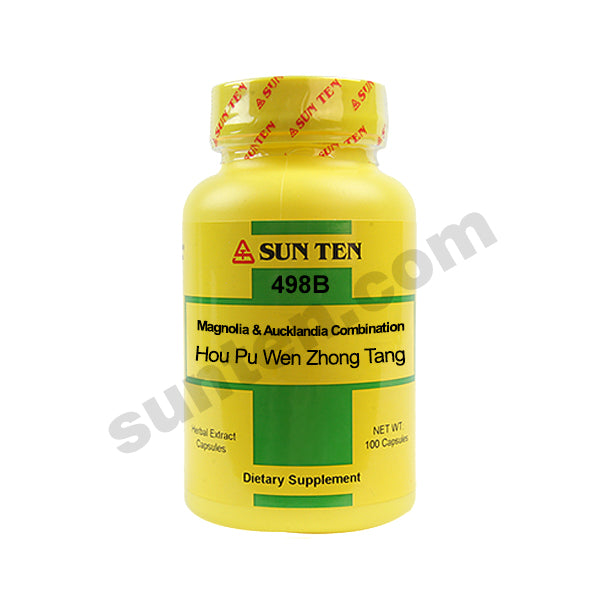Hou Pu Wen Zhong Tang
Magnolia & Aucklandia Combination Capsules | 厚朴溫中湯
Practitioners: Please LOGIN to view the wholesale price. This item can only be purchased by a licensed practitioner. Find a practitioner
✅ Vegetable Capsule
Ingredients: Rhizoma Zingiberis (gan jiang), Cortex Magnoliae officinalis (hou pu), Pericarpium Citri reticulatae (chen pi), Semen Alpiniae katsumadai (cao dou kou), Poria rubra (chi fu ling), Radix Vladimiriae (chuan mu xiang), Radix Glycyrrhizae (gan cao), Rhizoma Zingiberis recens (sheng jiang), Fructus Jujubae (da zao).
| Mandarin: 厚朴溫中湯 Pin-Yin: Hou Pu Wen Zhong Tang English: Magnolia & Aucklandia Combination Korean: 화해제 Romaji: Koboku Onchu To Kanji: 厚朴温中湯 Kampo: No |

